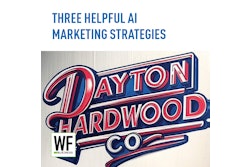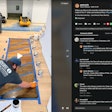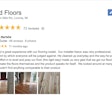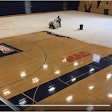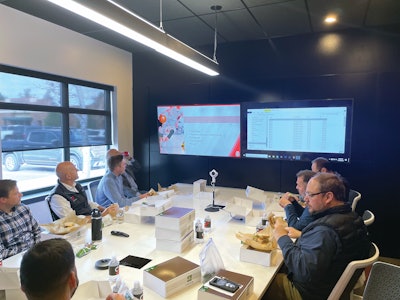
Are you interested in growing your wood flooring company? Are you interested in developing a higher end customer? Are you willing to become a recognized expert in the wood floor industry? If you answered “yes” to these questions, then I believe doing American Institute of Architects presentations is a must for you! I’ve seen firsthand how effective it can be in my wood flooring business.
What is AIA continuing education?
AIA continuing education is required for AIA members to renew their membership; they must complete 18 credit hours every year. Twelve hours must be on Health, Safety, and Welfare subjects. Six credit hours may be on topics such as Construction, Construction Process, Products, Engineering and so on. There are about 80,000 AIA members, so plenty of opportunity exists to create content related to wood flooring!
What kind of content should be in an AIA presentation?
An AIA presentation is supposed to be informative and general (as in, not brand-specific). A presenter may talk about the difference between strip flooring and wide plank flooring, or the benefits and drawbacks of different types of finishes. Newer technology (like UV-cured or LED-cured finishes) is always a particularly good bet when talking with people in the A&D market.
With a little forethought, dozens of topics could be found to make an AIA presentation. For example, a Health, Safety, Welfare (HSW) course is anything that relates to the structural integrity or health impacts of a building. It’s not too difficult to imagine an entire credit hour could be dedicated to the benefits of wood flooring with extremely low-VOC finishes and/or the health benefits of wood flooring versus carpeting (that we all know traps dirt, dust spores, dander, and more).
To qualify for a HSW credit, 75% of an AIA course’s content and instructional time must be on HSW topics as mentioned above. So, a one-hour course will spend at least 45 minutes on HSW content. All presentations must be AIA-approved.
Why are AIA presentations important?
Although wood flooring is loved by consumers, adds value to a home, promotes a healthier environment, and has the potential to last for generations, possibly centuries, the initial investment in wood floors may be two to three times as much as a low-end product like LVP. Unless wood floor professionals are willing to go out and proactively educate architects, designers, builders, and, ultimately, the general public, too often the choice is made to just go with the cheapest product. So the need for individual wood flooring professionals to go into their communities and meet with the A&D community simply cannot be overstated!
Support is available
The NWFA has 13 AIA-approved presentations members have access to. And wood flooring and finish manufacturers (and others) may be willing to help, or you could also team up with a builder. It’s a big undertaking, but asking an industry partner for help can make the process less work and more enjoyable. At our company, we have held AIA courses with the help of our supplier Robbins Sport Surfaces. (See a video about this at the end of this article.)
The process
Typically, the course presenter will bring in a box lunch for the participants, and the presentation is given while participants eat (the classic “lunch and learn”).
Particularly since the pandemic, nearly all of these CE courses have gone online. Professionals have gotten used to meetings online or phone consultations, and many people are still working part of the week from home. It has become more difficult to book in-person presentations—but “difficult” is not the same as “impossible.” I believe an in-person lunch and learn is the best return-on-investment advertising we do! We further believe that doing AIA presentations in person advances our company's interests and the interests of the wood flooring industry as a whole.
In my market, most of the work is put out for public bid, and the language is usually along the lines of the contract going to the “lowest responsible and responsive bidder.” If you have spent time educating an architect, that will go a long way toward emphasizing the “responsible” part of your reputation and your getting the job over low bidders. I encourage anyone looking to grow or build a business more focused on the A&D market to consider doing in-person AIA continuing courses; I think your results will speak for themselves.
Watch a video about this here:















